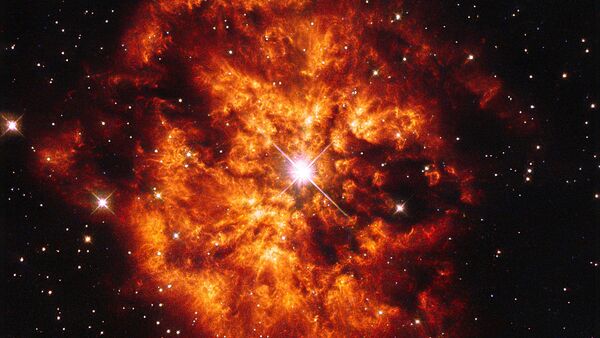Pshirkov's work was published in a recent issue of the magazine Monthly Notices of the Royal Astronomical Society Letters.
WF stars are massive stellar bodies (at least 20-times bigger than the Sun) which emit extremely high bursts of energy. These in turn create supersonic winds which blow outward as fast as 1,000 km per second.
When the winds from two or more WF stars collide, particles crash into each other and create huge energy sources, the Russian astronomer said.
"Colliding supersonic winds produce strong shocks that could accelerate particles to ultra-relativistic energies," the report said.
Pshirkov found the energy source of these stellar winds, WR 11, which is a system of γ-rays coming from two stars: one is 30 times as massive as our Sun and the other is as massive as 10 Suns.
For now, the WR 11 system remains the only detected system of that kind due to its close proximity and relatively high galactic latitude, Pshirkov said in the report.
"The detection of WR 11 by the Fermi LAT [a space observatory used to detect the interstellar source of energy] endorses colliding wind binaries as a new separate class of high energy sources," the scientific report said.
According to the Russian astronomer, the discovery of WR 11suggests that WF stars can be sources of high-energy cosmic rays, some of which supply energy in our Galaxy.



